Located on Europe’s Balkan Peninsula, Albania has been a crossroad of cultures and civilizations throughout the centuries. Lapped by waters of the Adriatic and Ionian Seas to the west, and an interior crossed by the Albanian Alps, Albania borders Montenegro, Kosovo and North Macedonia to the north and east, and by larger Greece to its south. This land of less than 29,000 km2 and a population today of close to four million people, may be considered a poor cousin relative to other larger, wealthier and more powerful European states, but it nevertheless boasts a rich and resplendent culture steeped in history and heritage. And, much like many of its European neighbors, the Albania of today was forged in the turbulent fires that have wracked Europe over past centuries.
History is a mute witness to the invasions and conquests that have pock-marked this tiny country throughout its tumultuous past. First by the Roman Empire and then by Byzantine, Venetian and Ottoman Empires, the country since its declaration of independence in 1912, has at various times been an independent state, a principality, a kingdom and a republic until subjugation in 1939 by Italy and later Germany. Following the end of World War II Albania became a reclusive and repressive Communist state until 1991, when it once again became a democratic republic.

Despite its rich and storied past Albania today offers much more than historical sites and archeological artifacts, it is also among the world’s top getaways from the hustle and bustle of modern life, and a welcome change from the other tourism-thronged cities of Europe and elsewhere. Home of charity icon and Nobel Peace Prize laureate Mother Theresa and the legendary 15th Century Albanian hero Skanderbeg, who resisted the Ottoman invasion, Albania is one country that you can visit at a leisurely pace and take time to absorb its rich culture and history in full.
Endowed with a balmy Mediterranean climate along its coastline that boasts blue and turquoise seas and beautiful beaches and an Alpine climate on its snow-clad mountain villages, visitors to Albania can enjoy one of the widest range of climatic regions. Visitors can bask in the warmth of Mediterranean waters, stroll along antique streets and alleys in its myriad cities and towns or go trekking along its many mountain paths for awe-inspiring views, all of it unspoiled by globalization and for the most part untainted by tourism commercialism.
Blessed with over 300 days of sunshine in a year, the country is billed as having more sunny days in a year than any other European country. The country can be a delight to visit at any time of the year but more so in autumn and spring. In autumn the orchards are ablaze with the bright orange of the persimmons and the cooler colors of the citrus fruits, while in spring the apple and cherry blossoms cover the roadsides with their pastel toned blossoms. While in September and October it is still warm enough to swim on the southern coast, the long spring evenings are a good time to enjoy the terrace and sidewalk cafes that are ubiquitous throughout the country.
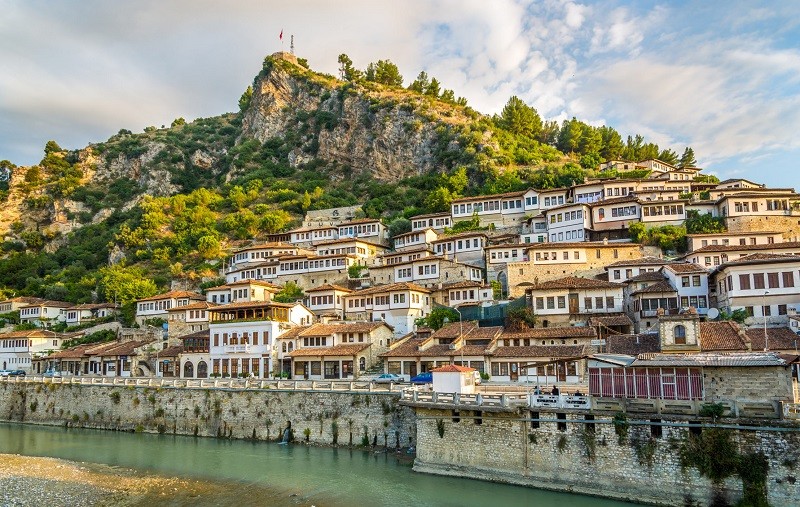
Beaches, Bays and Coves: Coastal Albania lies along a narrow strip of between about 10 and 30 km wide along the entire Albanian coast of more than 600km facing the Adriatic and Ionian Seas. The coastline bordering the Adriatic Sea runs for about 450km, interspersed with plenty of alluring beaches and beachfront getaways, while the rugged coastline facing the Ionian Sea with its towering cliffs offers isolated bays and coves that are difficult to reach, but which offer a privacy and solitude that is largely disappearing elsewhere..

Lakes and Parks: Ancient lakes with unique species that have been around for millions of years, and extensive park areas that offer unmatched views and quiet seclusion, accentuate any visit to this country.
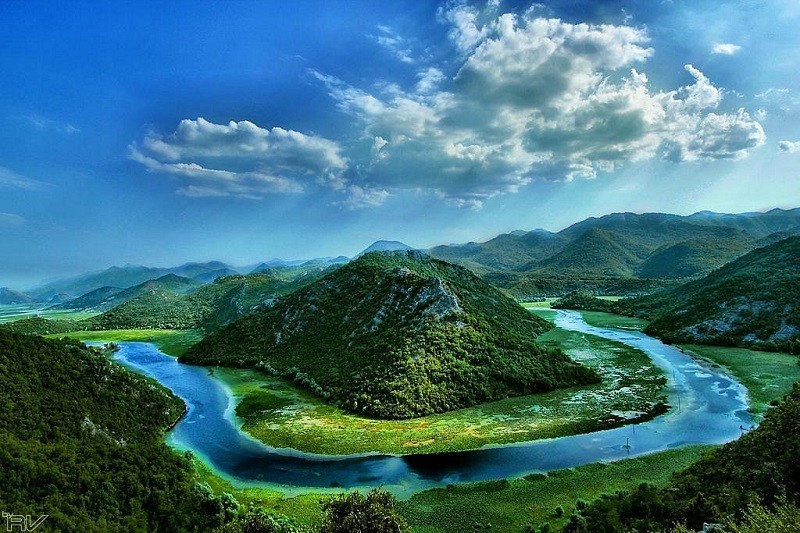
Lake Shkodra: The largest lake in the Balkans, Lake Shkodra straddles the border between Albania and Montenegro. Thousands of cormorants winter on this lake each year. It is relatively shallow and is fed by many different rivers as well as by springs, making it quite varied in its aquatic life, with various species of carp and trout in its waters.
Lake Ohrid: Shared between Albania and Macedonia in the southeastern part of Albania, Lake Ohrid is exceptionally deep and fed mainly by springs around the edge of the lake and on its floor. Above Lake Ohrid lies Prespa Lake, which is distinguished by its solitude and beautiful landscapes. These two lakes are nearly four million years old, and unique species of fish have evolved in them, among them the delicious koran and belushka.
Llogara National Park: This park is located 40km southeast of Vlora on the border between the Adriatic and Ionian seas. The park starts at 470 meters above sea level and climbs to 2018 meters. Close to the peak of Llogara Pass visitors may notice beautifully-shaped trees formed by air currents. Ask for the tree locally-known as ‘Pisha Flamur’ (the Flag Pine) located by the road. From the Llogara Pass one can clearly see the Ionian Sea three kilometers away, the steep rocky sides of Vetëtima (Lightning) Mountain and large parts of the Riviera. The park is considered one of Albania’s most valuable tourist attractions and it offers possibilities of eco-tourism, air sports, hiking and picnics.
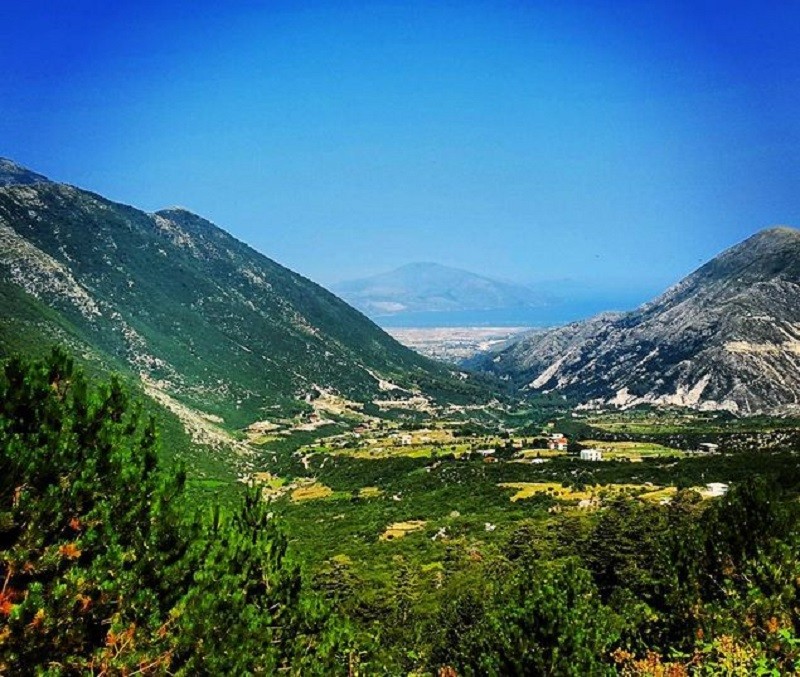
With over a third of the territory of Albania, roughly about a million hectares, under forest cover, the country is very rich in flora. About 3.000 different species of plants grow in Albania, many of which are used for medicinal purposes.
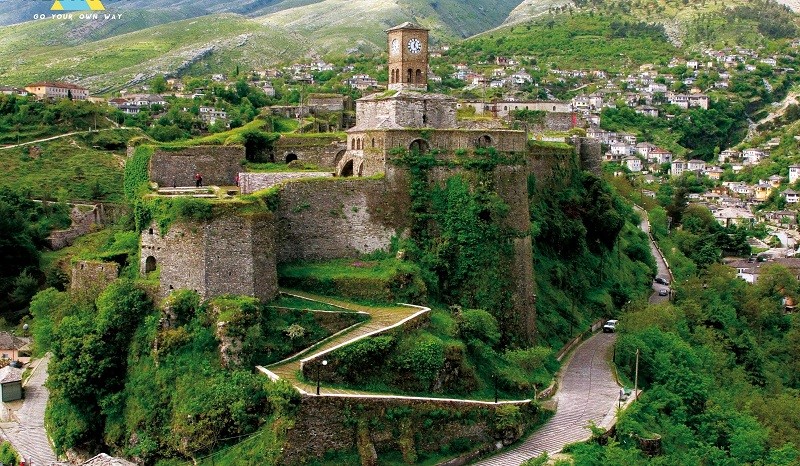
Cities and Castles: Steeped in centuries-old history, Albania is replete with ancient cities, castles and archeological remnants and artifacts.
Antigonea: The ancient town of Antigonea was founded in 295BCE by Pirro, the King of Epirus, and it was built in the following century where an earlier Illyrian settlement used to exist. It was named after Pirro’s first wife, the daughter of the King of Egypt. Objects found in the ruins of the ancient town attest to its wealth and early history. A small beautiful bronze statue of Poseidon, which is currently displayed in the National Historical Museum in Tirana, was found here as well. These objects attest to the city’s link to the sea and to Amantia and the towns in the Gulf of Vlore. Several small temples from the sixth century BCE have been found during the excavations in Antigonea.
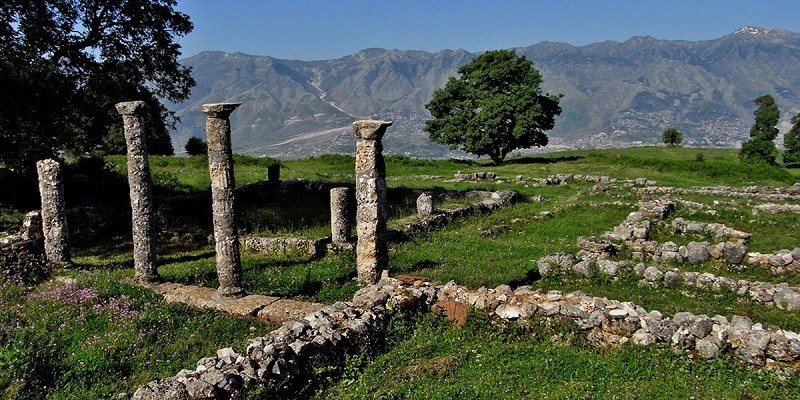
Butrint: The ancient town of Butrint is one of Albania’s and the Balkans’ major archaeological centers and is protected under UNESCO as a World Heritage Site. It is located on the shores of Butrint Lake, south of Saranda on the Greek border. The city’s name comes from a legend, according to which the city was founded by fleeing Trojans after the burning of Troy by the victorious Greeks. King Priam’s surviving son, Aeneas, sacrificed a bull to the Gods but the animal refused to die quickly and galloped to the sea before expiring. This was interpreted as a good omen and the place was called Buthrotum or ‘wounded’. The city of Butrint was most probably built during the third century BCE, on the south side of the hill. The city is surrounded by a wall built in the fourth and third centuries BCE, which enclosed a large city of 11 hectares including a theater, trade centers and temples. The wall is hardly ever straight but zigzags its way around the city instead — perhaps a way of increasing its defensive value.
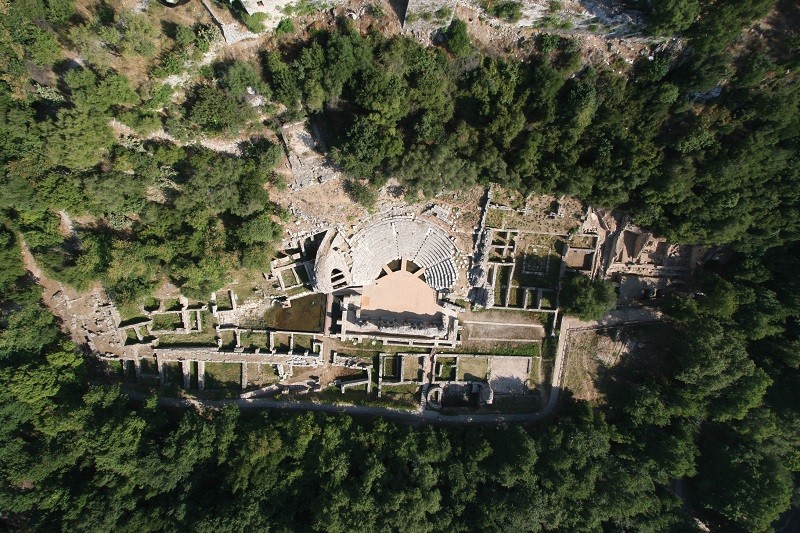
Bylis: Established in the third century BCE as an Illyrian town, Bylis flourished as a political, economic, and cultural center of the community. The city was governed by an annual council of civil servants. In 230-146 BCE, it introduced bronze coins, which along with other handicrafts produced from the workshops of Bylis were famous throughout the region. The city’s cathedral is one of the most important monuments of the ancient city and underwent several reconstructions. The floor before the entrance is laid out in mosaics that make up the largest mosaic surface discovered in Albania to date. It displays diverse motifs and scenes reflecting the daily life of shepherds, fishermen, and others.
Korça: The main city in south-eastern Albania, Korça is an interesting historical city with rich cultural traditions and fascinating buildings from the Ottoman period. Archaeological remains from the Neolithic era suggest that the area has been inhabited continually for the past 6,000 years, with significant cultural advancement from one period to the next.
The region played a significant part in the expansion of Byzantine Christianity in Albania. Today Korça represents one of the most delightful and pristine cities in Albania with a unique tradition of its own.
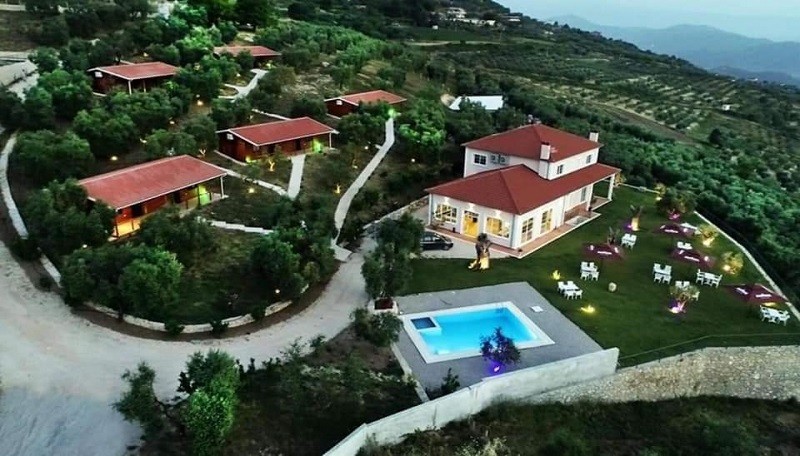
Kruja: This is one of the towns with the richest history in Albania. It is easily accessible from the capital since it is located only 32km away. The name and significance of Kruja is related to the deeds and activity of the Albanian national hero, Gjergj Kastrioti (Skanderbeg), who led the fight against the invading Ottomans in the 15th century. Kruja was Skanderbeg’s capital and its castle turned into an invincible stronghold of resistance against the Ottoman threat, repelling Turkish attacks for the better part of 25 years thus becoming famous in Europe.
Vlora: The second major port of the country after Durrës, the city of Vlora is situated in the south-western part of the country, in a picturesque area along the sea coast. In the Middle-Ages the Vlora region became an object of contention between various international powers that wanted to maintain a hold on Albania. During the Ottoman invasion it represented a center of that power. This is also evidenced by the extensive Ottoman buildings in the city, such as the Great Mosque in the town center, built in 1542 by the famous Turkish architect Mimar Sinan.
Castle of Berat: This is one of the most massive historical monuments of the Balkans, a grand fortress that dominates the Osum River. The castle is triangular shaped. If seen from below, the castle looks like it is part of the hill. The internal entrance tower is built with stone blocks belonging to Illyrian fortifications dating back to the fourth to second centuries BCE. The top of the hill is surrounded by an external peripheral wall of twenty-four towers. There are fourteen churches inside the castle that have contributed to making this castle very famous.
Castle of Gjirokaster: The castle is a grand fortress with a fantastic location, dominating the whole valley of the Drino. The National Museum of Weapons, a prison and the execution court are found within the castle. Excavations have found various ceramic objects and household objects, such as plates and cups, and also an antique wall, which stands proof of the settlement that belonged to the fourth and third centuries BCE. When exiting the castle, visitors walk along a road on both sides of which are 200 stone houses. The Mosque of Pajazut Khan is within the castle as well. To the north there is the old market, called the Castle Market, with 40 shops. The market has two gates, which close in the evening.
Castle of Ali Pasha Tepelenë: The castle of Tepelenë is an early Illyrian settlement strategically located at the crossing of routes along the Vjosa and Drino rivers. The castle was destroyed during the Turkish siege in 1492, and only a few ruins remain in the northern part. Later, the castle was rebuilt by the Turks and is currently preserved in good condition.

















